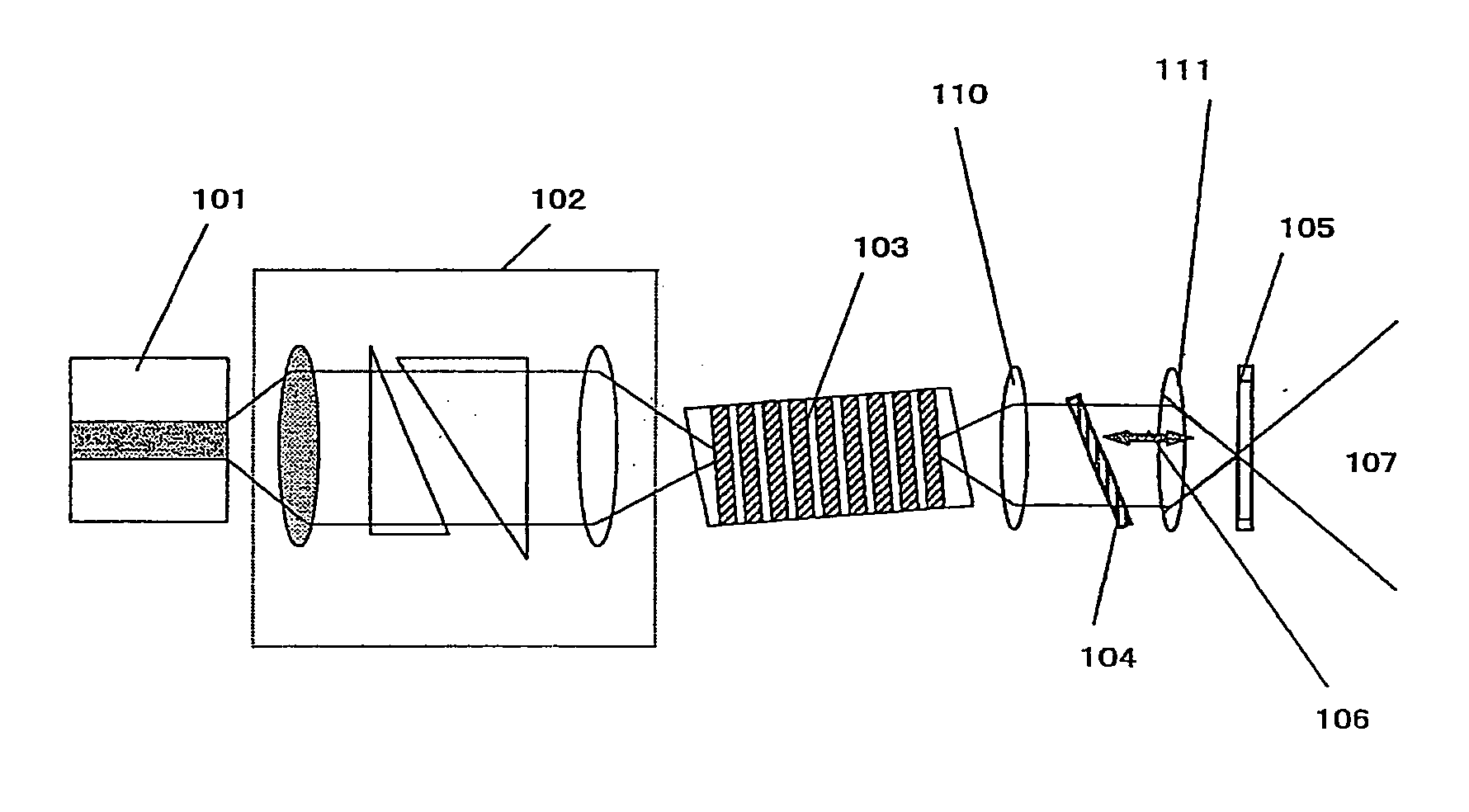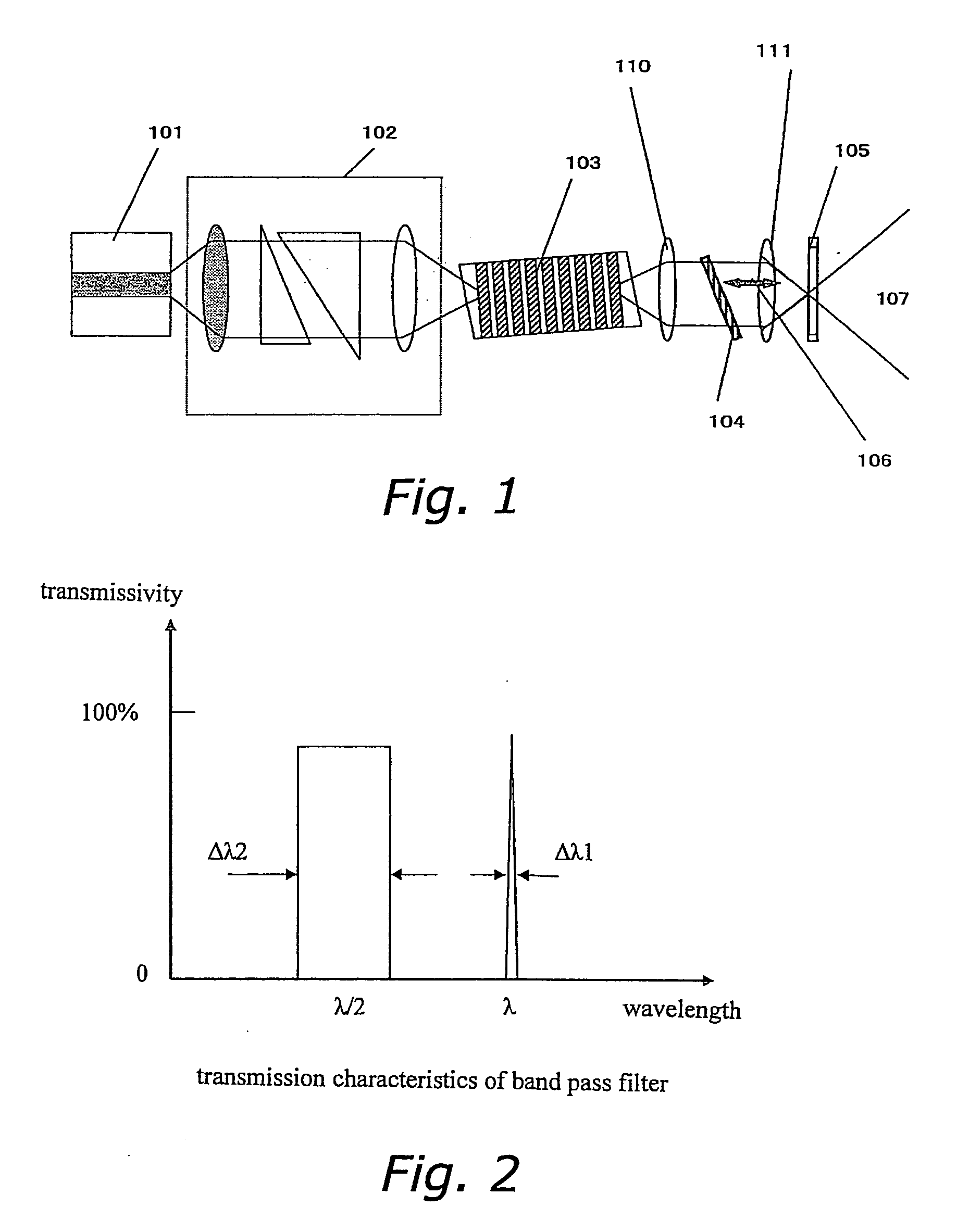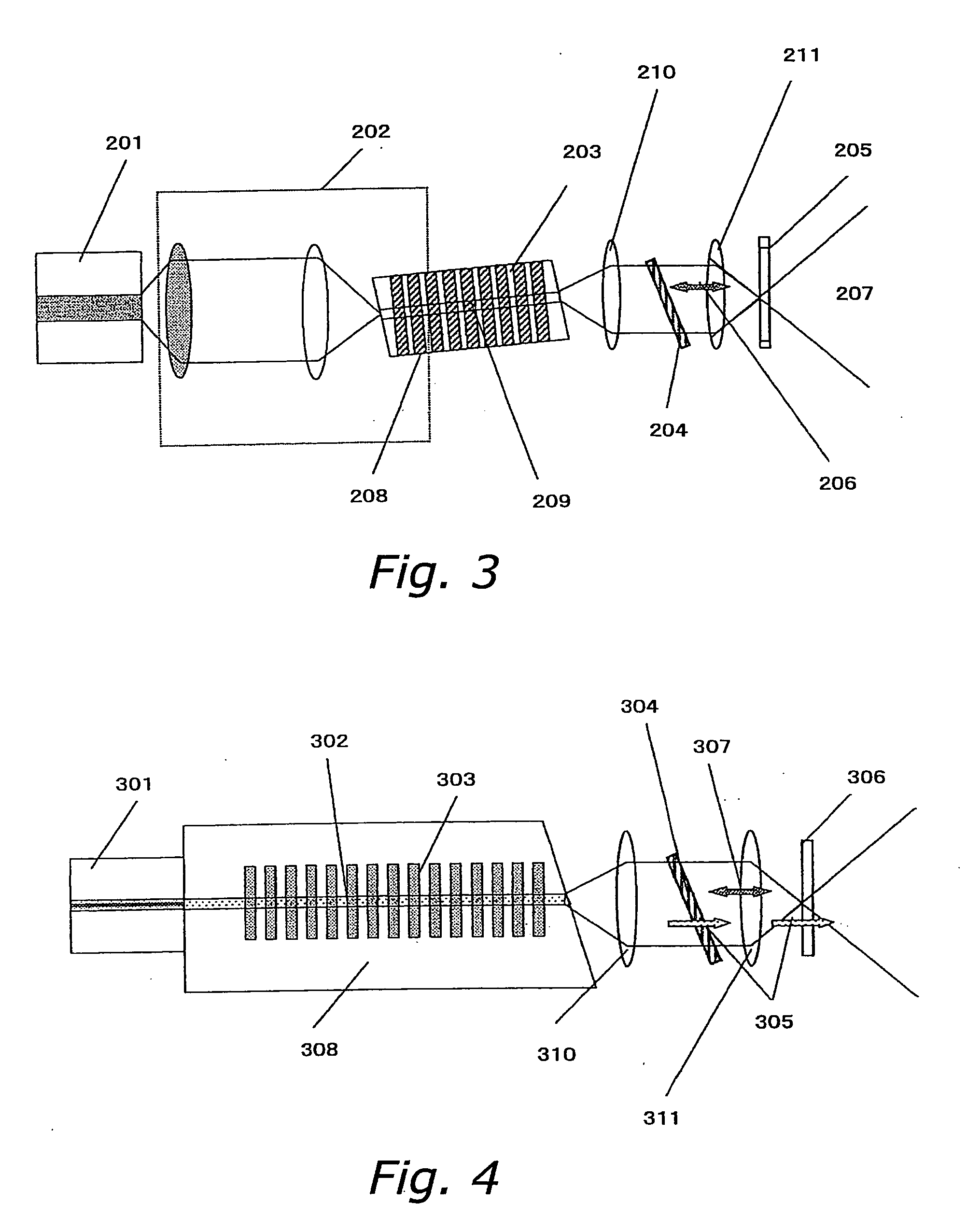Coherent light source and optical device
- Summary
- Abstract
- Description
- Claims
- Application Information
AI Technical Summary
Benefits of technology
Problems solved by technology
Method used
Image
Examples
first embodiment
[0061]FIG. 1 shows an example of the structure of the coherent light source of the present invention. In the example shown here, a wavelength selecting filter is constituted by a band pass filter and a dichroic mirror. The wavelength selecting filter is a confocal optical system, and the dichroic mirror is installed in the focal plane of the confocal optical system. The coherent light source comprises a semiconductor laser 101, a focusing optical system 102, a wavelength conversion element 103, a collimating lens 110, a band pass filter 104, a focusing lens 111, and a dichroic mirror 105.
[0062] The band pass filter 104 is composed of a dielectric multilayer film, and transmits only certain wavelengths with respect to the fundamental wave of the semiconductor laser 101. This will be described in further detail below. The dichroic mirror 105 is designed so as to reflect fundamental waves and transmit at least 95% of higher harmonic waves.
[0063] Next, the coherent light source of the...
second embodiment
[0077] We will now describe an example of applying the structure of the present invention to a wavelength conversion element that makes use of an optical waveguide. In FIG. 3, a wavelength conversion element 203 comprises a periodic polarization inverter 208 and an optical waveguide 209. The fundamental wave that exits a semiconductor laser 201 is focused on the optical waveguide 209. The fundamental wave that propagates through the optical waveguide 209 is subjected to wavelength conversion by the periodic polarization inverter 208, and becomes a higher harmonic wave. Using the optical waveguide 209 results in a high conversion efficiency of about 50%, and a 200 mW higher harmonic wave (wavelength 490 nm) is obtained from the semiconductor laser 201, which has a wavelength of 980 nm and an output of 500 mW. This constitution simplifies and stabilizes the optical system, and yields a coherent light source that is compact and stable.
[0078] Furthermore, with a waveguide type, the dir...
third embodiment
[0085] Here, we will describe a laser display as an example of an optical device that makes use of the coherent light source of the present invention.
[0086] With a laser display, a display of high color reproducibility can be achieved by using an RGB laser. High-output red semiconductor lasers have been developed as laser light sources. An increase in output has not been achieved with blue, however, and the very formation of a semiconductor laser is difficult with green. In view of this, it is necessary to use blue and green light sources that utilize wavelength conversion. In the coherent light source of the present invention, since a wide stripe semiconductor laser can be used, high-output blue and green light can be obtained by combining with a wavelength conversion element. For blue output, blue light of 440 nm can be obtained by subjecting a semiconductor laser of 880 nm to wavelength conversion, and for green output, green light of 530 nm can be obtained by subjecting a semic...
PUM
 Login to View More
Login to View More Abstract
Description
Claims
Application Information
 Login to View More
Login to View More - R&D
- Intellectual Property
- Life Sciences
- Materials
- Tech Scout
- Unparalleled Data Quality
- Higher Quality Content
- 60% Fewer Hallucinations
Browse by: Latest US Patents, China's latest patents, Technical Efficacy Thesaurus, Application Domain, Technology Topic, Popular Technical Reports.
© 2025 PatSnap. All rights reserved.Legal|Privacy policy|Modern Slavery Act Transparency Statement|Sitemap|About US| Contact US: help@patsnap.com



